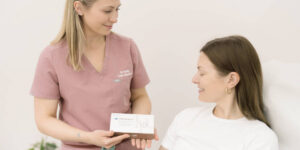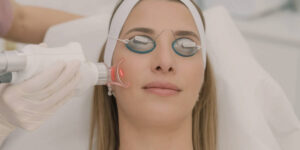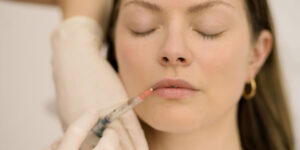Lip Filler
Experience the natural beauty of personalised lip fillers. Our expert team specialises in creating refined results tailored to your unique features. Using high-quality hyaluronic acid fillers, we enhance your lips with subtlety and precision. Focusing on personalised care, we take the time to understand your goals and desires. Whether you seek fuller lips, restored volume, or a rejuvenated appearance, our treatments are designed to meet your needs, prioritising natural results, ensuring balance and harmony with your facial features.
Treatment snapshot
45 mins
appointment
2-3/5
discomfort
1-3 days
downtime
Lasts
12-18 months
FAQs
When it comes to lip fillers, various brands offer high-quality products that can provide natural-looking results. One of the commonly used types of fillers for lip augmentation is hyaluronic acid (HA) fillers. HA is a naturally occurring substance in the body that helps retain moisture, providing hydration and plumpness to the skin.
Achieving natural results greatly depends on the skill and expertise of the practitioner performing the treatment. A qualified and experienced injector can assess your facial anatomy, listen to your goals, and tailor the treatment to achieve a natural lip enhancement that complements your overall features.
Lip filler migration is rare when performed by an experienced professional. Proper injection techniques and suitable filler choices can minimise the risk. Following post-treatment care instructions is important. If any concerns arise, consult your practitioner for guidance.
Lip fillers, particularly those made with hyaluronic acid (HA), are designed to be long-lasting. They gradually break down over time and are eventually metabolised by the body.
However, if you are unhappy with the results or experience any complications, our doctors can administer an enzyme called hyaluronidase to dissolve the filler.
At Fitzrovia Clinic, we understand that everyone’s experience with lip filler treatment is unique. While the procedure itself is generally well-tolerated, some individuals may experience mild discomfort or tenderness. Our doctors take great care to ensure your comfort throughout the procedure.
Before the treatment, a numbing cream may be applied to the lips to reduce sensation in the area. Our doctors can also provide a dental block to completely numb the mouth. It’s worth noting that all our lip fillers contain anaesthetic to further reduce discomfort during and after the procedure.
Minor bumps or irregularities can occur due to swelling, bruising, or uneven distribution of the filler immediately after the treatment. These usually subside within a few days as the swelling resolves and the filler settles into place.
If you notice persistent or significant bumps, it is advisable to consult with your practitioner. In some cases, massage or gentle manipulation of the treated area can help smooth out any irregularities. In other instances, additional treatment or adjustment may be necessary to achieve a more even result.
There is no one-size-fits-all ‘best’ technique, as each person’s needs are unique, however, some common lip filler techniques include:
- Linear threading: Injecting filler along the lip border for definition.
- Vermilion border: Enhancing the lip shape by focusing on the border.
- Cupid’s bow: Accentuating the natural curves of the cupid’s bow.
- Microdroplets: Placing small amounts of filler for subtle enhancement.
These techniques help achieve desired lip enhancements based on individual preferences and goals.
After a lip filler treatment, it’s possible to experience some swelling and bruising around the lips. This is a normal and expected side effect of the treatment and typically subsides within a few days. To help minimise swelling and bruising, it’s recommended to avoid any strenuous exercise or activities that may increase blood flow to the face for the first 24-48 hours after the treatment.
Applying a cold compress to the area can ease swelling, while antihistamines can help to reduce inflammation.
Like any medical treatment, there can be some side effects associated with lip filler. Although lip filler is generally considered to be safe and low-risk, it’s important to be aware of the potential side effects. Some of the side effects of lip filler may include:
- Swelling
- Bruising
- Redness
- Pain or tenderness
- Lumpiness or unevenness in the lips
- Infection
- Allergic reaction
- Migration or movement of filler material
- Lip asymmetry
- Skin discolouration around the injection site
There are several alternatives to lip filler that you can consider. Some of these include:
- Lip plumping gloss or balms: These products contain ingredients that temporarily plump up the lips, such as peppermint oil, cinnamon oil, or hyaluronic acid.
- Makeup techniques: Using lip liner, lipstick, and gloss strategically can create the illusion of fuller lips. For example, lining slightly outside the natural lip line and using a lighter shade of lipstick in the centre of the lips can make them appear fuller.
- Dermal stimulation: Techniques such as microneedling, radiofrequency, or ultrasound can stimulate collagen production and improve the texture and volume of the lips.
- Lip lift: Some doctors may recommend using Botox injections to relax the muscles around the upper lip, creating a fuller appearance. It works by relaxing the muscles that pull down the upper lip, allowing the lip to roll outward and appear more voluminous.








